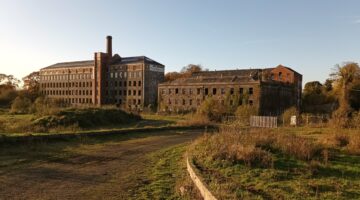These are built remains of regional importance which consist of individual monuments, those in state care, and wider areas of archaeological interest:
Only 1800 historic monuments in Northern Ireland are scheduled at March 2009 from a total of approximately 35,000 known sites across Northern Ireland.
Development plans should designate Areas of Significant Archaeological Interest (ASAIs)
Where the impact of a development proposal is unclear, the Department will require developers to provide a report in the form of an Archaeological Assessment and Evaluation
Archaeological Mitigation measures for work to archaeological sites include: preservation of remains in situ (for which there is a presumption), licensed excavation, recording examination and archiving of archaeological finds.
Sites and Monuments are protected under The Historic Monuments and Archaeological Objects (Northern Ireland) Order 1995. They are selected from criteria published in PPS6 and include sites dating from 7000BC to the 20th century, such as prehistoric tombs, castles, maritime sites, canals, WW2 defences and the Belfast Shipyard ‘Samson and Goliath’ crane
a) Scheduled Monuments
These include tombs, ring forts, historic and vernacular buildings, planned parklands, buildings and features associated with industrial heritage. Monuments in private hands are scheduled for protection through legislation and the requirement for Scheduled Monument Consent which is required for applications which affect these remains.
Other factors determining archaeological significance include: appearance within the landscape or townscape including landmark status, quality folklore/historical interest and association with a person or event in local tradition or legend, group value, or rarity.
b) Monuments in State Care
Archaeological monuments may be taken into government care and are called Monuments in State Care. These are protected and managed as a public asset by the Department for Communities.
c) Areas of Significant Archaeological Interest (ASAI)?
An area of special archaeological interest is the overall setting of a significant area within which a number of individual and related monuments or historic landscapes are located.
The potential effect of proposals on specific sites and their settings, as well as on the integrity, or the overall character of the area, are a major consideration in determining applications for development.
Areas of archaeological potential and other terms such as area of high archaeological potential or urban archaeological zone are terms used to identify parts of the city where it is known that buried archaeology is likely to survive. They are primarily created and used in the planning process to act as triggers that can alert planning officers to possible archaeological disturbance caused by proposed new development. They are often marked out on GIS databases and any application for development within them is likely to be referred to the archaeologist for comment and advice.
Sites of archaeological interest are contained in the Northern Ireland Sites and Monuments Record (NISMR). Any site on the register is defined as a Site of Archaeological Interest.
Development in an area of archaeological potential is likely to require archaeological evaluation and possible mitigation work in advance of building commencing. The areas are selected through study of past excavation work and historical and academic sources including the Sites and Monuments Record.

